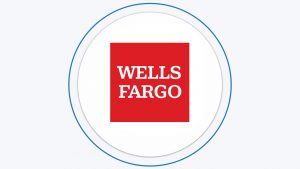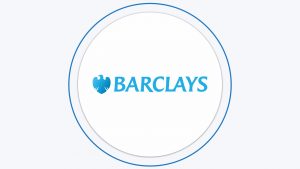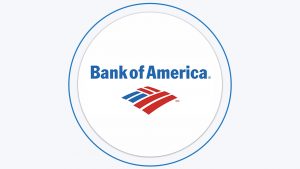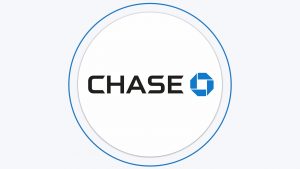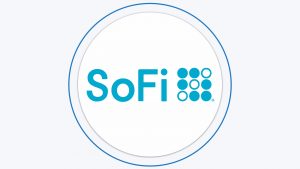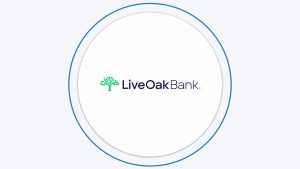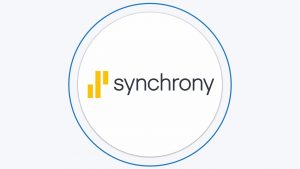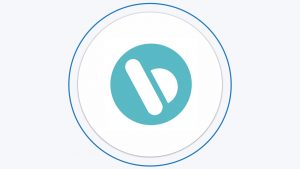Table Of Content
What Is A Savings Plan?
A savings plan is a strategy or method for setting aside money on a regular basis in order to reach a financial goal, such as building an emergency fund, saving for a down payment on a home, or planning for retirement. The purpose of a savings plan is to create a consistent and disciplined approach to saving money, so that over time, you can accumulate the funds needed to achieve your financial objectives.
There are many different types of savings plans, but they typically involve setting a specific savings goal, determining how much money you need to save each month to reach that goal, and then making regular contributions to a savings account or investment account.
Savings plans may also involve tracking your progress toward your goal, adjusting your contributions as necessary, and taking steps to minimize expenses and maximize your savings.
How To Create A Savings Plan?
By following these steps and committing to your plan, you can build financial security and achieve your long-term financial goals.
1. Set A Specific Goal
Setting a specific goal is the first step in creating a good savings plan. Here are some examples of specific financial goals you might want to set:
Building an emergency fund: An emergency fund is money you set aside to cover unexpected expenses, such as medical bills or car repairs. A good rule of thumb is to save at least three to six months‘ worth of living expenses. So, if your monthly expenses are $3,000, your emergency fund goal would be to save $9,000 to $18,000.
Saving for a down payment on a home: If you're planning to buy a home, you'll need to save for a down payment. The amount you'll need to save will depend on the cost of the home you want to buy and the percentage of the purchase price required for a down payment. For example, if you want to buy a $300,000 home and the down payment requirement is 10%, you'll need to save $30,000.
Planning for retirement: Retirement savings is a long-term goal that requires consistent saving over many years. Your retirement savings goal will depend on your desired retirement lifestyle and the age at which you want to retire. A common rule of thumb is to save 15% of your income for retirement, but this can vary depending on your circumstances.
Saving for a vacation: A short-term savings goal might be to save for a vacation. Determine the cost of the vacation, including travel, accommodations, and activities, and set a goal to save that amount. For example, if you want to take a $5,000 trip to Europe in six months, you'll need to save $834 per month.

2. Determine The Timeline And Calculate Monthly Savings
Determining the timeline is important because it will help you calculate how much you need to save each month to reach your goal, and it will give you a sense of the overall feasibility of your plan. Here are a few real-life examples to illustrate this:
- Saving for a down payment on a house: Let's say you're hoping to save up a $40,000 down payment on a house within the next 3 years. To calculate how much you need to save each month, you would divide $40,000 by 36 months (3 years). This means you need to save approximately $1,111 per month to reach your goal.
- Building an emergency fund: Suppose you want to build an emergency fund of $10,000 within the next 12 months. To figure out how much you need to save each month, you would divide $10,000 by 12 months. This means you need to save approximately $833 per month to reach your goal.
- Saving for College: Let's say you have a newborn child and you want to save enough money to pay for their college education by the time they turn 18. You estimate that the total cost of a four-year college education, including tuition, room and board, textbooks, and other expenses, will be $150,000. Based on these assumptions, you can calculate that you will need to save approximately $570 per month to reach your goal.
3. Create A Budget
A budget will help you track your income and expenses so you can see where your money is going. Once you have a budget, you can start to see where you can cut back on your spending so you can save more money.
Analyzing your income and expenses is an important step in creating a good savings plan because it helps you identify areas where you can cut back on expenses to free up money for savings.
Here are some budget strategies you can consider:
- The 50/30/20 budget. This is a popular budgeting method that divides your take-home income into three categories: 50% for needs, 30% for wants, and 20% for savings.
- The zero-based budget. This budgeting method involves allocating every dollar of your income to a specific expense. This means that your income minus your expenses should equal zero.
Pay-yourself-first budgeting: With this budgeting method, you prioritize savings by allocating a specific amount of your income to savings or debt repayment before you pay for any other expenses. This ensures that you are saving for your future goals first and then living off the remaining funds. This method helps you make savings a priority and avoid overspending.

4. Open A Savings Account
Once you've calculated how much you need to save, choose a savings account that offers a competitive interest rate and aligns with your savings goals.
A high-yield savings account is a savings account that offers a higher interest rate than a traditional savings account. This means that you will earn more money on your savings each month. High-yield savings accounts are a great way to grow your savings faster.
Here are some factors to consider when selecting a savings account:
Interest rate: Look for a savings account with a high interest rate, as this will help your money grow faster over time. Compare the interest rates offered by different banks and credit unions to find the best option.
Fees: Make sure to choose a savings account with low or no fees. Some accounts may charge monthly maintenance fees or transaction fees, which can eat into your savings.
Accessibility: Consider how easily you can access your savings when you need it. Some accounts may have restrictions on withdrawals or require you to maintain a minimum balance to avoid fees.
FDIC insurance: Ensure that your savings account is insured by the Federal Deposit Insurance Corporation (FDIC). This provides protection for up to $250,000 per depositor, per insured bank.
Other features: Some savings accounts may offer additional features, such as mobile banking or overdraft protection. Consider whether these features are important to you.
Top Offers From Our Partners
![]()
Top Offers From Our Partners
![]()
5. Automate Your Savings
To automate your savings, you will need to set up a recurring transfer from your checking account to your savings account.
You can do this through your bank's online banking platform or by visiting your bank in person. You will need to specify the amount you want to transfer, the frequency of the transfers (e.g., weekly, bi-weekly or monthly), and the date you want the transfer to occur.
Once you've set up the automatic transfer, the money will be transferred from your checking account to your savings account on the designated date, and you'll be one step closer to reaching your savings goal.
6. Monitor And Adjust (And Celebrate Milestones!)
Monitoring your progress is an important part of creating and sticking to a savings plan. Here are some things to keep in mind when monitoring your progress:
Review your plan regularly: Review your savings plan on a regular basis, such as monthly or quarterly, to make sure you're staying on track. This will help you identify any issues early on and make adjustments if necessary.
Track your savings: Keep track of how much you've saved and how much you still need to save to reach your goal. You can use a spreadsheet, budgeting app, or other tool to help you track your progress.
Adjust your plan as needed: If you find that you're not able to save as much as you had planned, or if your financial situation changes, adjust your plan accordingly. This might mean extending your timeline or finding ways to reduce expenses.
Stay motivated: Sticking to a savings plan can be challenging, so it's important to stay motivated. Consider setting small milestones along the way and rewarding yourself when you reach them. For example, you might treat yourself to a nice dinner or buy something you've been wanting once you've saved a certain amount.

Best Tips For A Successful Savings Plan
Here are some additional tips that you can consider when making a savings plan:
-
Set Up A Savings Challenge
There are many different savings challenges out there that can help you reach your savings goals faster.
One popular challenge is the 52-week savings challenge. In this challenge, you start by saving $1 the first week, $2 the second week, and so on, until you're saving $52 the final week. By the end of the year, you'll have saved $1,378!
-
Set Realistic Goals
It's important to set goals that are achievable given your income and expenses. If you set a goal that is too ambitious, you may become discouraged and give up on your savings plan.
Instead, start with a small goal that you can achieve relatively quickly, such as saving $500 in three months. Once you've achieved that goal, you can set a new goal that's a bit more challenging, such as saving $1,000 in six months.
-
Find A Savings Buddy
Having a savings buddy can help you stay motivated and on track. Find a friend or family member who is also saving money and make a pact to check in with each other regularly.
You can also help each other stay accountable by setting up a shared savings account or tracking your progress on a shared spreadsheet.
-
Be Patient
Saving money takes time, and it's important to be patient and stay committed to your savings plan. Don't get discouraged if you don't see results immediately.
It may take several months or even years to reach your savings goal. The important thing is to stay consistent and keep saving, even if progress is slow at first.
-
Reward Yourself
When you reach a savings goal, be sure to reward yourself. This will help you stay motivated and keep saving. Some ideas for rewards include taking a weekend getaway, buying a new book, or going out to dinner.
FAQs
What should I do if I can't save as much as I need to each month?
In such a case, look for ways to reduce expenses or increase income to free up more money for savings. Consider adjusting your timeline or savings goal if necessary.
Should I pay off debt before saving?
It depends on your situation. Generally, it's a good idea to pay off high-interest debt before saving, but you should also have some savings for emergencies.
How do I know if I'm saving enough?
Regularly review your savings plan and monitor your progress. If you're not on track to reach your goal, consider adjusting your plan.
How can I save money on a tight budget?
If you have tight budget, look for ways to cut back on expenses, such as cooking at home instead of eating out, and consider picking up a side gig to increase your income.
Should I save for short-term or long-term goals first?
It depends on your situation and priorities. Generally, it's a good idea to have some savings set aside for emergencies before focusing on long-term goals like retirement.
Top Offers From Our Partners
![]()




